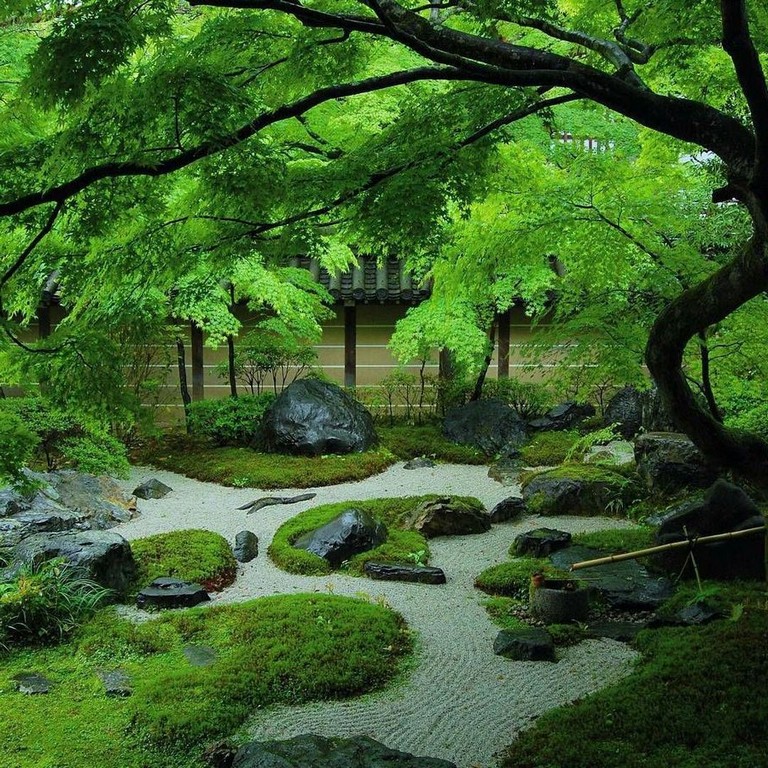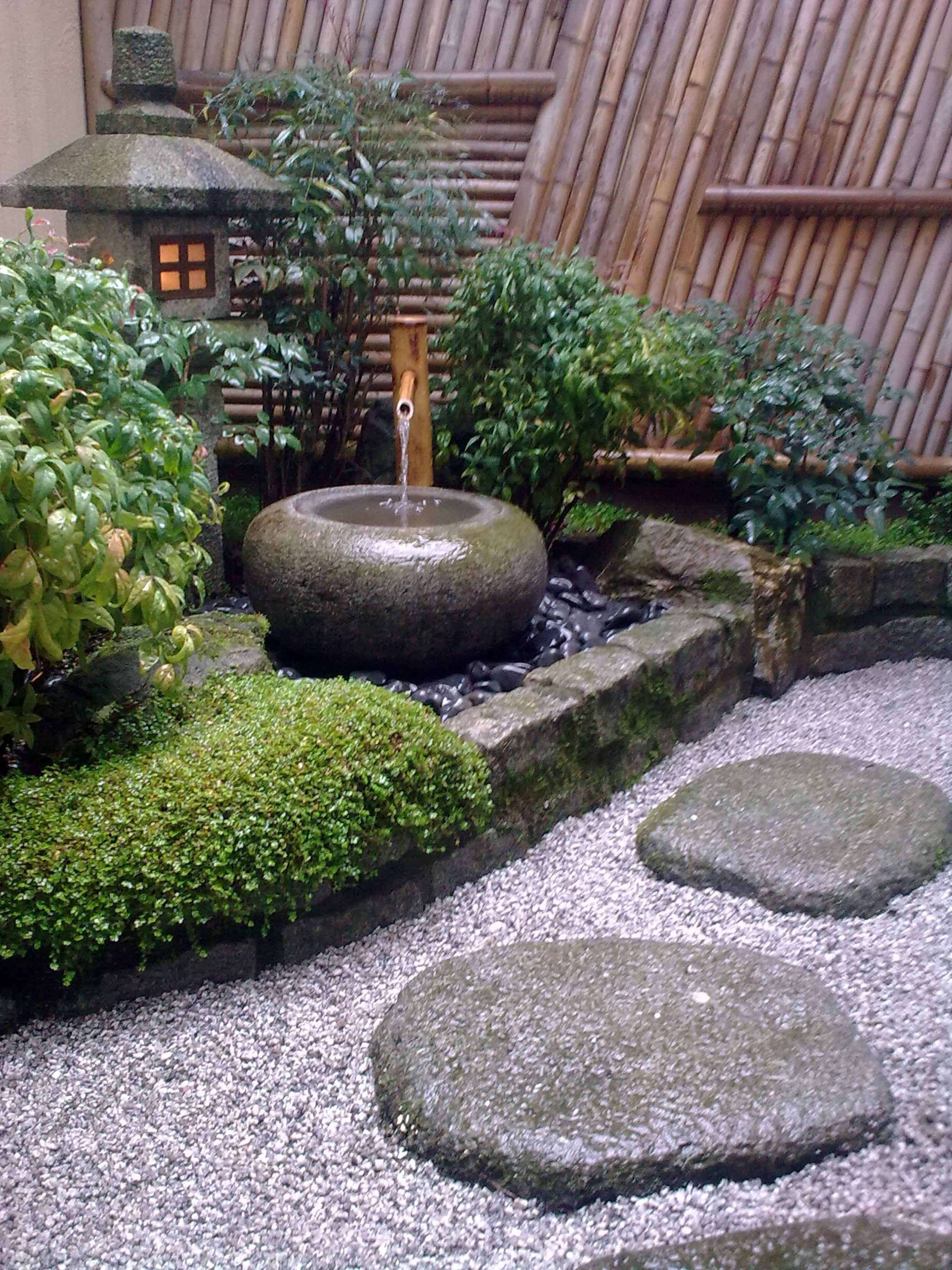

The main characteristics of the zen garden are austerity and simplicity. One key to creating a zen garden is avoiding excess-overloading the site with plants, too many rocks, lanterns or statues. (Miniature zen garden kits are sold for use indoors.) Zen gardens can be large or small and because they are dry gardens, they typically don’t need an irrigation source. Nature is represented from a minimalistic point of view. A special place is given to every plant, rock and the sand in an effort to create harmony, tranquility and balance. Zen gardens are intended for relaxation, meditation and contemplation. On clear nights, you can experience the summer moon in the Malott Japanese Garden. Today, visitors experience the garden from the veranda, but also while sailing on the pond in early autumn to view the harvest moon. Emperor Saga ordered its creation during his reign (809-823 CE) or shortly after, and it was part of the garden while he resided in the temple. This pond is the oldest known surviving part of any garden in Japan. The Osawa Pond is a manmade water feature in Kyoto next to Daikaku-ji Temple. Moonlight reflected in water has long been admired in Japan. When the weather conditions are right, the moon appears as a giant glowing disk over the mountain range, quite a spectacular view. Visitors enjoy the moon rising over the Higashiyama mountains, which are reflected in the water. The pond is featured in many Japanese poems and the landscape offers cherry trees, Japanese maples and willows-a popular spot for moon gazing. The Hirosawa pond was constructed as part of a temple garden built by the grandson of Emperor Uta. The Hirosawa Pond (Hirosawa-no-ike) and Osawa Pond (Osawa-no-ike) in Japan are remnants of Heian period gardens (794-1185 CE). Water in the Zen GardenĪ common garden theme in Asia is the perception and enjoyment of the moon. This 17th-century landscape style is composed so that views are first concealed and then revealed to the delight of visitors.


Sansho-en is a garden of the kaiyu-shiki or promenade style, in which the visitor walks a path of discovery or journey. The third, Horaijima (Island of Everlasting Happiness) is symbolic of paradise-in sight yet so elusive. Two-Seifuto (Island of Clear, Pure Breezes) and Keiunto (Island of the Auspicious Cloud)-are open to the public. This 17-acre lakeside garden features three islands. And, the half-buried, moss-covered rocks all add to the illusion. The weathered pine trees-representing longevity in Japanese culture-are pruned and trained to give the illusion of old age. The short bloom period of flowering shrubs, perennials and ornamental trees reflect the balance between the ephemeral existence of human life and nature’s timelessness. Large rocks are partially buried, appearing as if they have been in place forever. It illustrates the Japanese respect for nature and timelessness.

A tour of the garden can be a thought-provoking experience. It is one of 18 stops in this stunning setting. You can experience the zen or dry garden in the Elizabeth Hubert Malott Japanese Garden. These sparse elements help one avoid distractions while stimulating meditation. Unlike flower-filled perennial borders, the zen garden is reduced to bare essentials-sand and rocks and a limited plant palette. The sand in a dry garden is raked in patterns to represent waves and ripples. Carefully placed stones and boulders symbolize mountains while white sand represents flowing water. Rocks are an essential part of the garden, believed to be the “bones” of the earth. The correct term for this type of garden is karesansui, or dry garden.Ī Zen Garden is the epitome of control, moderation and simplicity. The term “Zen garden” was first coined by Loraine Kuck, in her 1935 book “100 Gardens of Kyoto.” By the 1950s, the term became popular as a way for Westerners and Europeans to describe the minimalistic rock-and-sand gardens found at Zen Buddhist temples in Japan. There are many definitions for the word “zen.” It’s been described as “a state of calm attentiveness in which one's actions are guided by intuition rather than by conscious effort.” It may be defined as having qualities such as meditative calmness often associated with practitioners of Zen Buddhism.


 0 kommentar(er)
0 kommentar(er)
